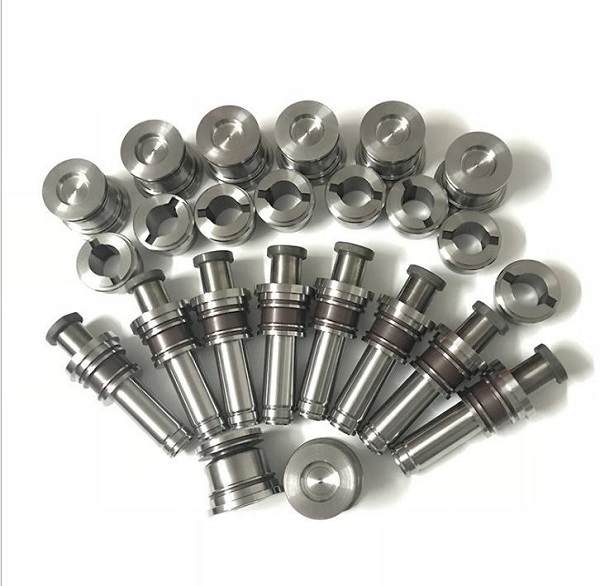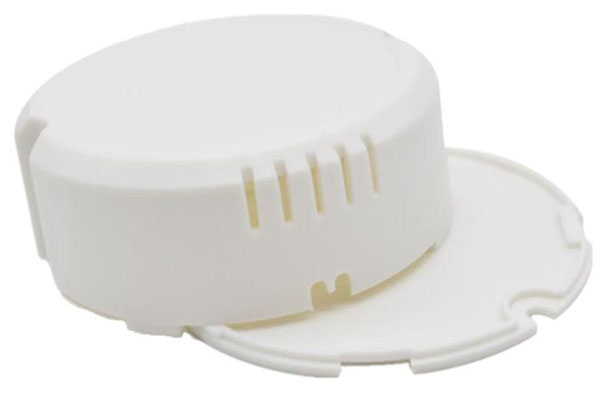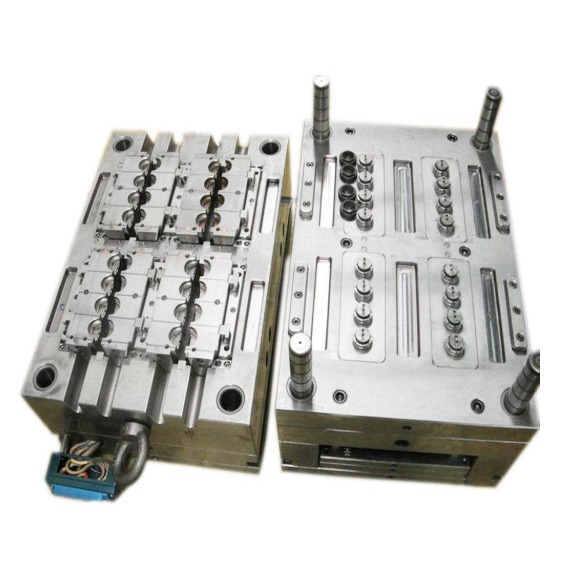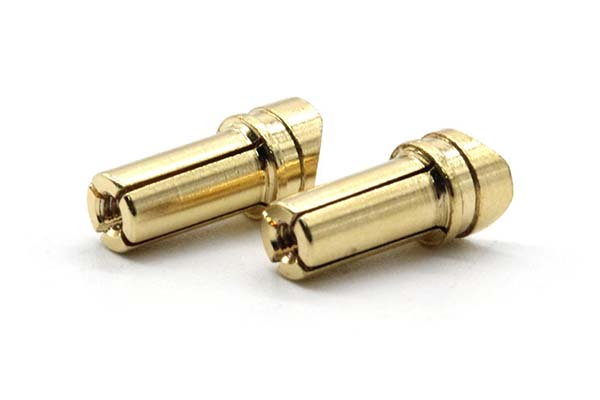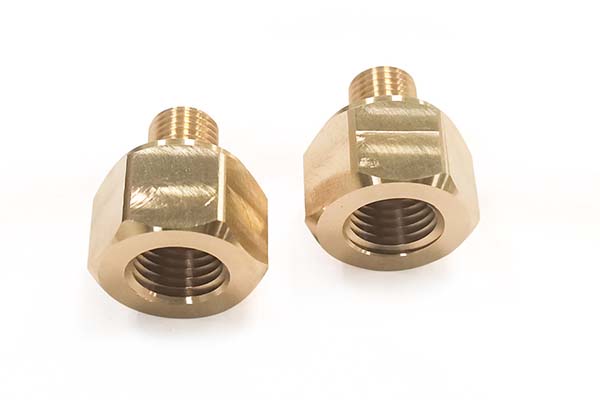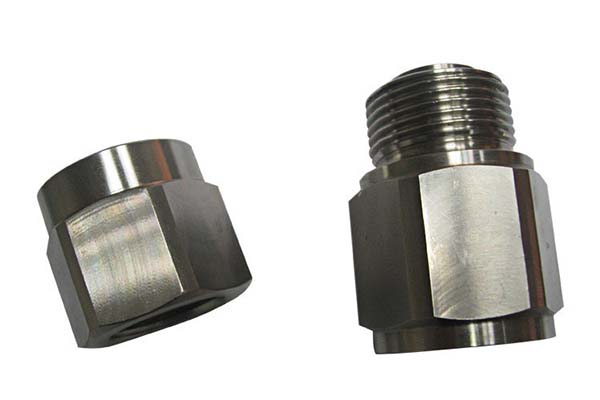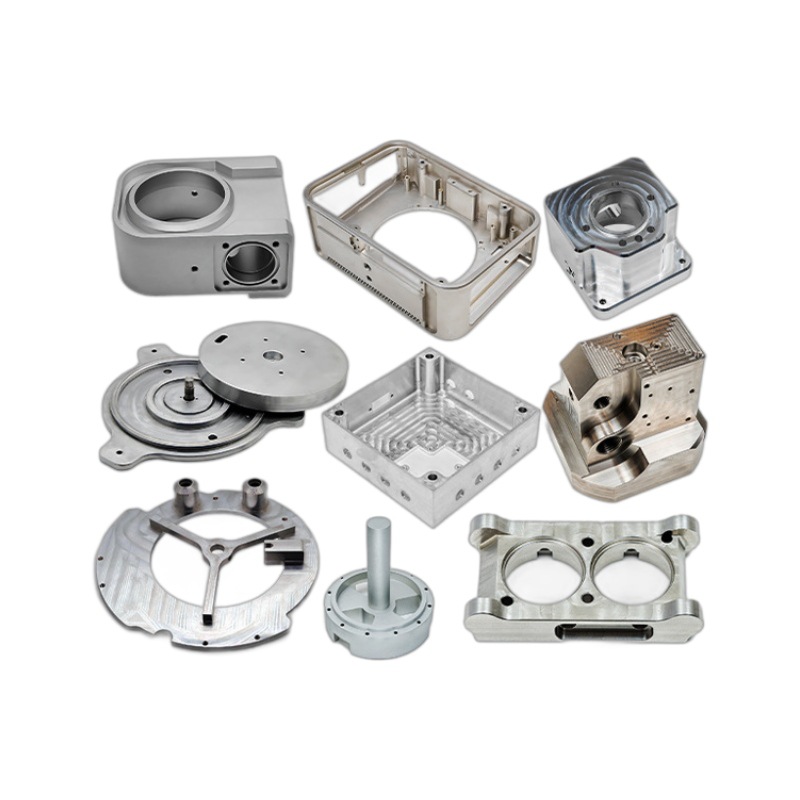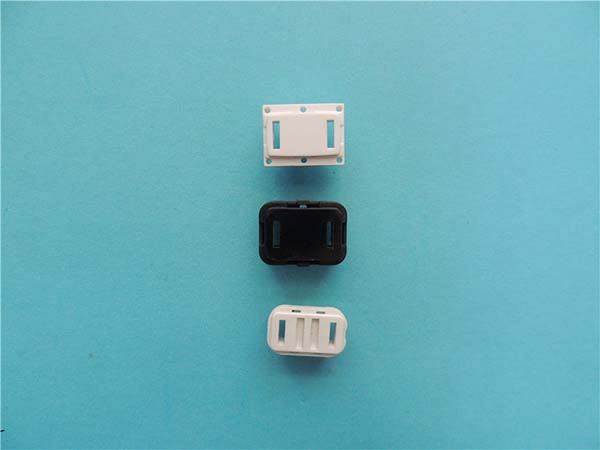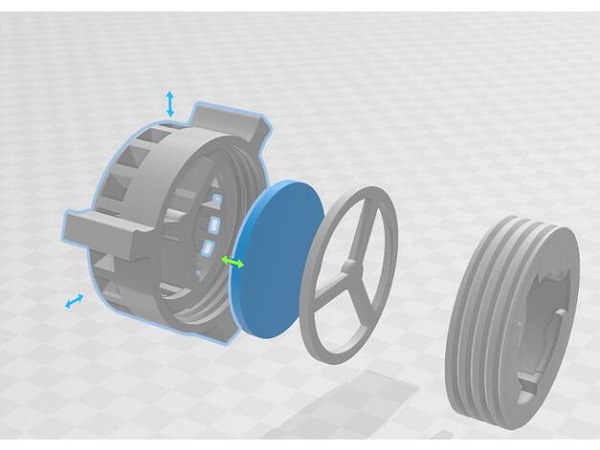Titanium and its alloys have gained significant popularity across various industries, especially aerospace, medical, and automotive, due to their exceptional strength-to-weight ratio, corrosion resistance, and biocompatibility. However, machining titanium through Computer Numerical Control (CNC) processes comes with its own set of unique challenges. This article delves deep into these challenges, explores solutions, and covers crucial aspects like tooling, coolant strategies, alloy selection, and post-machining treatments.
Titanium CNC Machining Challenges & Solutions
The Problem of Low Thermal Conductivity
Titanium has a notoriously low thermal conductivity. During CNC machining, the heat generated at the cutting zone doesn't dissipate easily. As a result, the cutting tool's temperature can skyrocket. For instance, in a typical milling operation, the tool temperature can reach up to 800°C, which is far higher than what is ideal for most cutting tools. This high temperature softens the tool material, leading to rapid tool wear and reduced tool life.
Work Hardening Phenomenon
Titanium alloys are prone to work hardening. When the material is machined, the surface layers undergo plastic deformation, making them harder. This hardened layer can cause the cutting tool to experience increased cutting forces. A study showed that in turning operations of Ti-6Al-4V, the cutting forces increased by up to 30% after the first pass due to work hardening. This not only accelerates tool wear but can also affect the dimensional accuracy of the workpiece.
Chatter Reduction
Chatter is a common issue in titanium machining. The low stiffness of titanium and the high cutting forces can induce vibrations in the cutting tool and the workpiece. Chatter can lead to poor surface finish, uneven tool wear, and in severe cases, damage to the tool and the workpiece. In a milling process, chatter can cause the surface roughness (Ra) to increase from 0.5μm to over 2μm, which is unacceptable for many applications, especially in the aerospace and medical fields.
Solutions
High Feed Low Speed Strategy: Adopting a high feed low speed approach can help. By increasing the feed rate and reducing the cutting speed, the heat is distributed over a larger area of the tool, reducing the temperature at the cutting edge. Research has shown that this strategy can reduce tool wear by up to 50% in some titanium machining operations.
Trochoidal Milling: Trochoidal milling involves the tool following a circular path while cutting. This reduces the engagement angle between the tool and the workpiece, minimizing the cutting forces and heat generation. It also improves chip evacuation. In a trochoidal milling experiment on titanium, the chip evacuation rate increased by 40%, leading to better surface finish and longer tool life.
Adaptive Toolpaths: Using software that generates adaptive toolpaths can optimize the machining process. These toolpaths adjust in real-time based on the cutting conditions, such as cutting forces and tool wear. This ensures that the tool is always operating at an optimal level, reducing the risk of tool failure and improving the overall machining efficiency.
Tooling & Cutting Parameters for Titanium
Choosing the Right Tooling
Carbide end mills are a popular choice for titanium machining. Tungsten carbide, specifically, has high hardness and good thermal conductivity, making it suitable for withstanding the high temperatures generated during machining. Coated tools further enhance performance. Physical Vapor Deposition (PVD) coatings, like titanium nitride (TiN), can reduce friction and increase the tool's resistance to wear. A study found that PVD-coated carbide end mills had a 30% longer tool life compared to uncoated ones when machining titanium.
Variable Helix End Mills
Variable helix end mills are designed to reduce chatter. The varying helix angles prevent the formation of harmonic vibrations, which are a common cause of chatter in titanium machining. They can improve the surface finish and extend the tool life. In a milling operation on a titanium alloy, using variable helix end mills reduced the surface roughness (Ra) by 30% compared to standard end mills.
Cutting Parameters
Cutting Speed: For titanium alloys, a relatively low cutting speed is recommended. For example, when machining Ti-6Al-4V, a cutting speed of around 50-100 m/min is often used. Higher speeds can lead to excessive heat generation and rapid tool wear.
Feed Rate: The feed rate should be carefully selected. A moderate feed rate helps in efficient material removal without overloading the tool. In turning titanium alloys, a feed rate of 0.1-0.3 mm/rev is commonly used.
Trochoidal Speeds and Feeds: In trochoidal milling, the speeds and feeds are adjusted to optimize the circular toolpath. The cutting speed may be slightly higher than in conventional milling, around 80-120 m/min, and the feed rate is adjusted based on the tool diameter and the desired material removal rate.
Tool Life Optimization
To optimize tool life, it's essential to consider factors like tool geometry, cutting parameters, and coolant use. Regular tool inspection and replacement at the appropriate time are also crucial. By using the right combination of these factors, manufacturers can significantly reduce tooling costs. For example, a company that machined a large number of titanium aerospace components reduced its tooling costs by 40% by optimizing tool life.
Coolant & Lubrication Strategies in Titanium Machining
Importance of Cooling and Lubrication
Coolant plays a vital role in titanium machining. Due to the low thermal conductivity of titanium, effective cooling is necessary to reduce tool temperature and prevent excessive tool wear. Lubrication helps in reducing friction between the tool and the workpiece, improving chip evacuation, and enhancing the surface finish.
High-Pressure Coolant
High-pressure coolant systems can deliver coolant directly to the cutting zone at high pressures, typically above 70 bar. This helps in breaking up the chips and improving chip evacuation. In a study on milling titanium, using high-pressure coolant reduced the chip length by 50%, preventing chip re-cutting and extending tool life.
Flood Coolant vs Mist Coolant
Flood coolant involves drenching the machining area with a large volume of coolant. It provides good cooling but may have issues with chip evacuation in some cases. Mist coolant, on the other hand, uses a fine mist of coolant mixed with air. It offers better lubrication and can be more environmentally friendly. In some applications, a combination of both flood and mist coolant can be used for optimal results.
Through-Tool Coolant
Through-tool coolant systems deliver coolant directly through the cutting tool. This ensures that the coolant reaches the cutting edge precisely, providing effective cooling and lubrication. In drilling titanium, through-tool coolant can improve the hole quality and extend the drill bit life.
Minimum Quantity Lubrication (MQL)
MQL uses a very small amount of lubricant, typically in the form of an aerosol, along with compressed air. It reduces the amount of coolant waste and is more environmentally friendly. In some machining operations, MQL can provide similar results to traditional coolant systems in terms of tool life and surface finish.
Coolant Types
There are different types of coolants available for titanium machining, such as water-soluble coolants, synthetic coolants, and oil-based coolants. Water-soluble coolants offer good cooling properties, while oil-based coolants provide better lubrication. The choice of coolant depends on the specific machining operation and requirements.
Chip Evacuation and Thermal Management
Efficient chip evacuation is crucial in titanium machining to prevent chip re-cutting and overheating. The coolant helps in flushing out the chips. Proper thermal management, through the use of coolant and appropriate cutting parameters, ensures that the tool and the workpiece remain within an acceptable temperature range, maintaining dimensional accuracy and surface quality.
Titanium Alloys Selection for CNC Applications
Ti-6Al-4V Machinability
Ti-6Al-4V is one of the most commonly used titanium alloys in CNC machining. It offers a good balance of strength, corrosion resistance, and machinability. However, compared to some other alloys, it still presents challenges due to its low thermal conductivity and work hardening tendency. When machining Ti-6Al-4V, specific tooling and cutting parameters need to be optimized to achieve good results.
Grade 2 vs Grade 5 Titanium Machining
Grade 2 titanium is commercially pure and has better formability and corrosion resistance. Grade 5 (Ti-6Al-4V) is stronger but more difficult to machine. In a machining comparison, it was found that Grade 2 required lower cutting forces and had a slightly better surface finish when machined under the same conditions as Grade 5. The choice between the two depends on the application requirements.
Alpha-Beta Titanium Alloys
Alpha-beta titanium alloys, like Ti-6Al-4V, contain both alpha and beta phases. They offer a combination of high strength and good formability. However, their machining can be complex due to the presence of two phases. The beta phase is more ductile and can cause issues like chip adhesion, while the alpha phase is harder and can contribute to tool wear.
Aerospace and Medical Implant Titanium Alloys
In the aerospace industry, titanium alloys are used for their high strength-to-weight ratio. Alloys like Ti-6Al-4V are commonly used in aircraft structural components. In the medical field, titanium alloys are used for implants due to their biocompatibility. For example, Ti-6Al-4V ELI (Extra Low Interstitial) is a popular choice for medical implants as it has lower levels of interstitial elements, reducing the risk of corrosion in the body.
Corrosion-Resistant Titanium Grades
Some titanium grades, such as Grade 7, are specifically designed for high corrosion resistance. They are often used in applications where exposure to harsh environments is expected, like in the chemical and marine industries. These grades may have different machining characteristics compared to other alloys, and appropriate tooling and processes need to be selected.
Machinability Comparison and Heat Treatment Effects
Different titanium alloys have varying levels of machinability. Heat treatment can also affect the machinability of these alloys. For example, annealing can soften the material, making it easier to machine, while aging can increase its hardness, presenting more challenges. A machinability comparison table can help manufacturers choose the right alloy for their CNC applications based on their specific machining requirements.
Post-Machining Surface Treatments & Quality Control
Surface Finish (Ra)
The surface finish of machined titanium parts is crucial, especially in applications like aerospace and medical devices. The Ra value represents the average roughness of the surface. For aerospace components, a Ra value of 0.8μm or lower is often required. To achieve this, proper machining techniques, including the right choice of tooling, cutting parameters, and coolant, are essential.
Electropolishing Titanium Parts
Electropolishing is a post-machining treatment that can improve the surface finish of titanium parts. It involves immersing the part in an electrolyte solution and applying an electric current. This process removes a thin layer of material from the surface, smoothing it out. Electropolished titanium parts can have a Ra value as low as 0.1μm, providing an extremely smooth surface.
Passivation
Passivation is a process that creates a protective oxide layer on the surface of titanium. This layer enhances the corrosion resistance of the material. In the CNC machining of titanium for medical implants, passivation is often carried out to ensure the long-term stability of the implant in the body.
Non-Destructive Testing
Non-destructive testing (NDT) methods, such as ultrasonic testing, X-ray inspection, and magnetic particle inspection, are used to detect defects in machined titanium parts without damaging them. In aerospace applications, NDT is mandatory to ensure the integrity of critical components. For example, ultrasonic testing can detect internal cracks as small as 0.1mm in titanium parts.
Dimensional Inspection
Accurate dimensional inspection is essential to ensure that the machined titanium parts meet the required specifications. Coordinate Measuring Machines (CMMs) are commonly used for this purpose. They can measure the dimensions of a part with high precision, typically within ±0.01mm. Any deviations from the specified dimensions can be corrected during the machining process or in post-machining operations.
Residual Stress Relief
Machining processes can introduce residual stresses in titanium parts. These stresses can affect the part's performance and dimensional stability. Residual stress relief can be achieved through heat treatment or mechanical methods, such as shot peening. Heat treatment at a specific temperature can relieve the internal stresses, ensuring the long-term reliability of the part.
Vibratory Finishing
Vibratory finishing is another post-machining treatment that can improve the surface finish and remove burrs. The part is placed in a vibratory bowl along with abrasive media. The vibration of the bowl causes the media to abrade the surface of the part, resulting in a smoother finish. This process can be adjusted to achieve different levels of surface roughness.
Yigu Technology's Perspective
Yigu Technology, as a parts custom manufacturing supplier, understands the intricacies of CNC machining titanium. We have invested in state-of-the-art equipment and trained our technicians to handle the unique challenges of titanium machining. Our experience has taught us that a combination of the right tooling, coolant strategies, and alloy selection is key to producing high-quality parts. We also emphasize strict quality control, including post-machining treatments, to ensure that our customers receive parts that meet their exact specifications. Whether it's a small batch of prototypes or large-scale production, Yigu Technology is committed to providing top-notch titanium machining services.
FAQs
Q1: What is the best tool material for CNC machining titanium?
A1: Carbide, especially tungsten carbide, is a popular choice due to its high hardness and good thermal conductivity. Coated carbide tools, such as those with PVD coatings, offer even better performance in terms of reducing friction and wear.
Q2: How can I improve the surface finish of machined titanium parts?
A2: You can improve the surface finish by using the right tooling (e.g., variable helix end mills), optimizing cutting parameters, using an appropriate coolant, and performing post-machining treatments like electropolishing or vibratory finishing.
Q3: Why is titanium so difficult to machine compared to other metals?
A3: Titanium has a low thermal conductivity, which causes heat to build up at the cutting zone, leading to rapid tool wear. It also has a tendency to work harden, and its low stiffness can result in chatter during machining. These factors make it more challenging to machine compared to many other metals.
